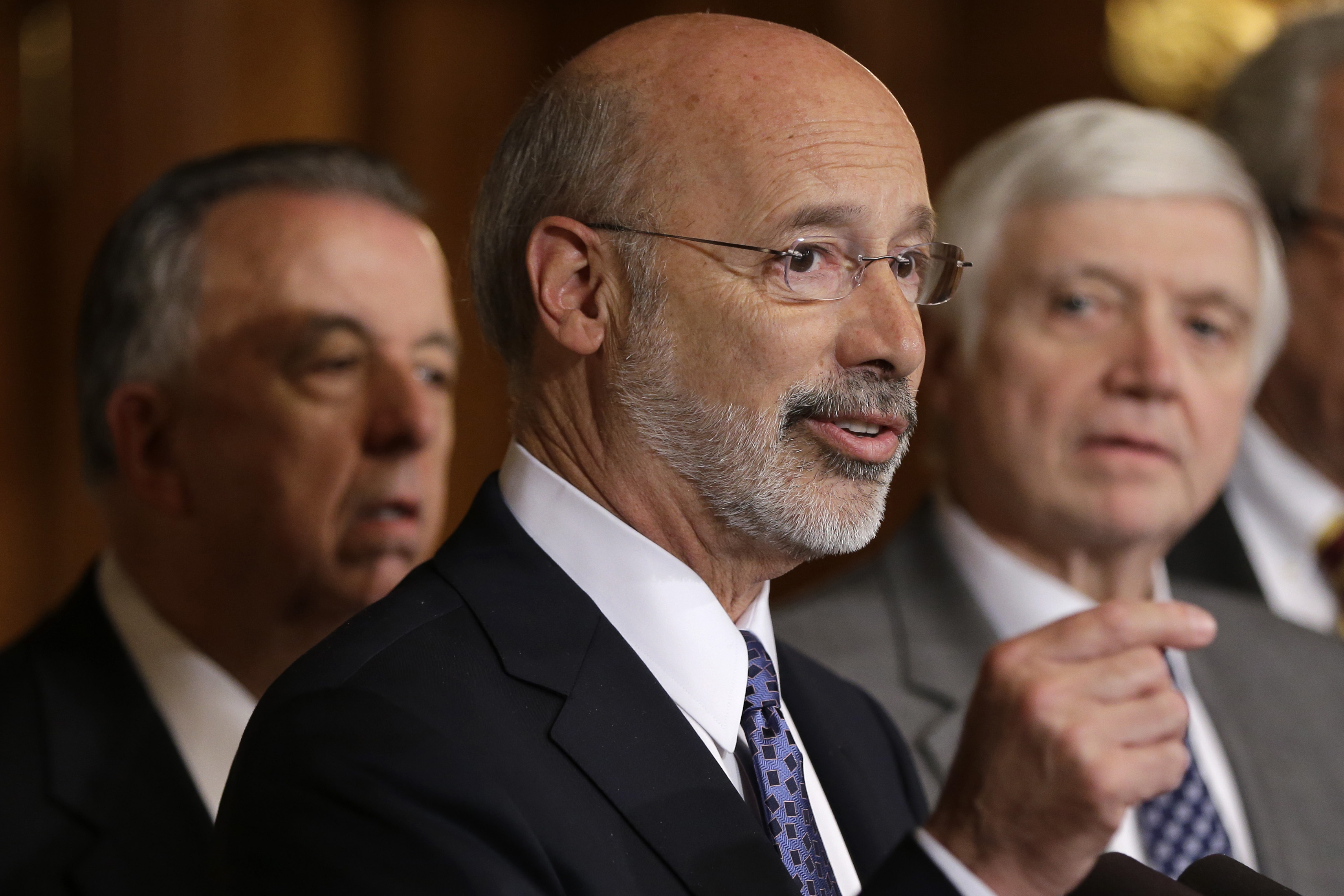
By MARC LEVY
Associated Press
HARRISBURG, Pa. (AP) — Urged on by President Donald Trump, Republicans vowed Tuesday to fight Pennsylvania’s new court-imposed map of congressional districts, as dozens of candidates assessed their chances under newly formed districts and the odds that a federal court could block them.
Republican members of Congress and Pennsylvania Republican lawmakers planned to sue in federal court as early as Wednesday in a bid to block a map expected to improve Democrats’ chances at erasing the GOP’s U.S. House majority.
The new map substantially overhauls a GOP-drawn congressional map that has helped produce a predominantly Republican delegation and was widely viewed as among the nation’s most gerrymandered.
With control of the U.S. House on the line in November, Trump urged Republicans to challenge the new map of Pennsylvania’s 18 congressional districts all the way to the U.S. Supreme Court, if necessary.
“Your Original was correct! Don’t let the Dems take elections away from you so that they can raise taxes & waste money!” Trump tweeted.
The Democratic-majority state Supreme Court met its deadline Monday to issue the new boundaries after it threw out a 6-year-old GOP-drawn map as unconstitutionally gerrymandered. The Republican-controlled Legislature and Democratic Gov. Tom Wolf did not produce a consensus replacement map in the three weeks allotted by the court.
Democrats cheered the new map, while Republicans blasted it and it left dozens of candidates reconsidering their future.
Chief among them is Republican Rep. Ryan Costello, whose suburban Philadelphia district was narrowly won by Democrat Hillary Clinton in 2016. Costello is in more dire straits now that the court added the heavily Democratic city of Reading to his district and ironed out geographic contortions that were designed to capture more Republican voters.
On Tuesday, Costello could not yet say if he will run in his district if the court-ordered congressional map survives a federal court challenge.
But Costello lashed out at the state Supreme Court, saying the justices’ map was politically motivated, their map-making process was politically corrupt and that state lawmakers should consider impeaching them.
“I’m all riled up,” Costello said.
Pennsylvania’s state House Republican majority leader, Dave Reed, now lives in the same district as U.S. Rep. Glenn Thompson, a fellow Republican, rather than the district of the man he had hoped to succeed, retiring Republican U.S. Rep. Bill Shuster. Reed said he did not know what he would do.
Joe Peters, a former top state drug prosecutor and Scranton police officer, had been running to succeed a fellow Republican, U.S. Rep. Lou Barletta, who is campaigning for U.S. Senate.
Peters now finds his rural northeastern Pennsylvania home in the same district as Republican U.S. Rep. Tom Marino. That prompted Peters to start thinking about moving into one of two nearby districts without a Republican incumbent while trying to gauge whether a federal lawsuit could undo the new districts.
“It’s a combination of a game of chicken and a game of chess,” Peters said.
The map removes the heart of one district from Philadelphia, where a crowd of candidates had assembled to replace the retiring Democratic Rep. Bob Brady, and moves it to suburban Montgomery County. That leaves many of those candidates in the same districts as Democratic Reps. Dwight Evans and Brendan Boyle.
The new map also renders the March 13 special election in southwestern Pennsylvania virtually meaningless: the court’s map puts each candidate’s home in a district with a Pittsburgh-area incumbent. Neither candidate — Democrat Conor Lamb and Republican Rick Saccone — responded to messages about their plans beyond the special election.
The state court ruled last month that Republicans who redrew district boundaries in 2011 unconstitutionally put partisan interests above neutral line-drawing criteria.
Independent analysts said the court-ordered map should improve Democratic prospects while still favoring Republicans as a whole. An analysis conducted through PlanScore.org concluded the court’s redrawn map eliminates “much of the partisan skew” favoring Republicans on the old Republican-drawn map, although not all of it.
The new map is to be in effect for the May 15 primary. The first day for candidates to start circulating petitions is next Tuesday, but petitions weren’t available yet and neither was complete information about which municipalities and precincts were in each new district.
Republicans will argue in federal court that legislatures and governors, not courts, have the constitutional responsibility to draw congressional maps. But constitutional law professors say they appear to face an uphill battle since federal courts are normally reluctant to undo a state court decision.



















